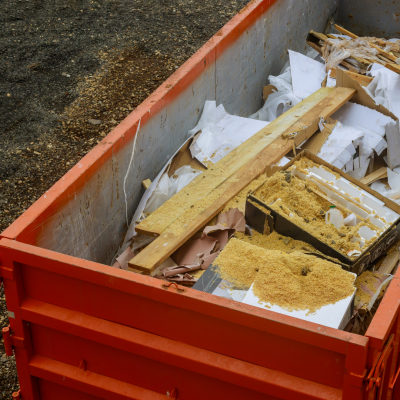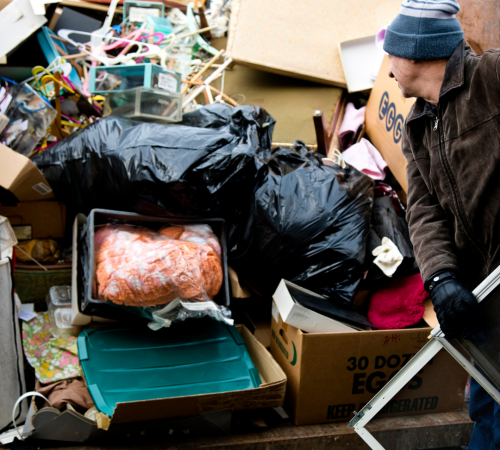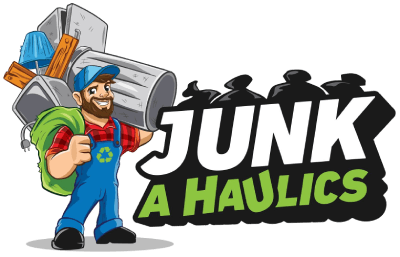Junk Removal 101: Essential Steps for a Successful Cleanup
Embarking on a junk removal mission can feel overwhelming, but with the right plan in place, it doesn’t have to be a daunting task. Whether you’re tackling a cluttered garage, a basement filled to the brim, or simply looking to declutter your living space, following essential steps can streamline the process and lead to a successful cleanup.
In this guide, we’ll delve into the fundamentals of junk removal, providing you with actionable steps to effectively tackle clutter and reclaim your space. From initial planning and organization to the actual removal and disposal, each step plays a crucial role in achieving a clutter-free environment.
Whether you’re a seasoned organizer or a novice looking to reclaim your space, this comprehensive guide will equip you with the knowledge and tools needed to execute a successful junk removal project. Say goodbye to clutter and hello to a more organized and rejuvenated living space. Let’s dive in and transform your space one step at a time.
Safety First: Tips for Handling Hazardous Materials During Junk Removal
When embarking on a junk removal project, safety should always be your top priority, particularly when dealing with hazardous materials. From chemicals to sharp objects, these items pose risks not only to your health but also to the environment if mishandled. In this guide, we’ll explore essential tips and precautions for safely handling hazardous materials during your cleanup endeavors.

- Identify Hazardous Materials: Before you begin your junk removal project, take the time to identify any potentially hazardous materials that may be present. These could include items such as old paint cans, batteries, electronics, pesticides, and cleaning chemicals. Knowing what you’re dealing with upfront will help you plan for proper handling and disposal.
- Educate Yourself: Familiarize yourself with the proper handling and disposal procedures for hazardous materials in your area. Different jurisdictions may have specific regulations governing the disposal of certain items, so it’s essential to know the rules to avoid any legal issues.
- Wear Protective Gear: When handling hazardous materials, always wear appropriate personal protective equipment (PPE) to minimize the risk of exposure. This may include gloves, safety goggles, masks, and protective clothing. Make sure your PPE fits properly and is in good condition before starting your cleanup.
- Handle with Care: When moving or transporting hazardous materials, exercise caution to avoid spills, leaks, or breakages. Use sturdy containers and secure lids to prevent accidental exposure. If handling sharp objects, such as broken glass or metal, use tools or gloves to protect your hands from cuts and punctures.
- Ventilate the Area: If you’re working in a confined space or handling materials with strong odors or fumes, ensure adequate ventilation to minimize exposure to harmful chemicals. Open windows and doors, use fans, or work outdoors whenever possible to improve air circulation and reduce the risk of inhalation.
- Store Hazardous Materials Properly: If you need to store hazardous materials temporarily before disposal, make sure to do so safely. Keep them in a secure location away from children and pets, ideally in a well-ventilated area with no direct sunlight or extreme temperatures.
Sorting and Categorizing: Streamlining Your Junk Removal Process
Sorting and categorizing your junk is a crucial step in the junk removal process. It not only helps in decluttering your space effectively but also ensures that each item finds its appropriate destination, whether it’s for recycling, donation, or disposal. In this comprehensive guide, we’ll delve into the importance of sorting and categorizing, along with practical strategies to streamline your junk removal process.
Understanding the Importance of Sorting
Before diving into the actual sorting process, it’s essential to understand why sorting is crucial. Sorting allows you to identify items that can be recycled, reused, donated, or disposed of responsibly. By separating your junk into different categories, you can optimize the efficiency of your cleanup efforts and minimize waste.
Setting Up Sorting Stations
To streamline the sorting process, consider setting up designated sorting stations in your space. These stations can include bins or containers labeled for different categories such as recyclables, donations, and trash. Having clearly defined sorting areas makes it easier for you and others involved in the cleanup to categorize items efficiently.
Establishing Sorting Criteria
As you begin sorting through your items, establish clear criteria for what qualifies as recyclable, reusable, or disposable. Consider factors such as the condition of the item, its potential for reuse, and local recycling guidelines. Having predefined criteria helps maintain consistency throughout the sorting process and ensures that each item is properly categorized.
Prioritizing Items for Donation or Reuse
One of the primary goals of sorting is to identify items that can be donated or reused by others. As you sift through your belongings, set aside items that are in good condition and may be of value to someone else. Clothing, furniture, electronics, and household goods are examples of items that are often accepted by donation centers or charities.
Recycling and Responsible Disposal
For items that cannot be donated or reused, such as broken electronics or household hazardous waste, it’s essential to identify appropriate recycling or disposal methods. Research local recycling facilities or hazardous waste disposal centers where you can safely dispose of these items. Be sure to follow any guidelines or regulations regarding the disposal of specific materials.
Proper Handling of Hazardous Materials
When sorting through your junk, exercise caution when handling hazardous materials such as chemicals, batteries, or sharp objects. Use protective gear such as gloves and goggles, and follow proper procedures for storing and transporting these items safely. If unsure about how to dispose of hazardous materials, contact your local waste management authority for guidance.

Disposal Options: Exploring Eco-Friendly Solutions for Junk Removal
In our modern world, the environmental impact of our actions is becoming increasingly important. This includes how we dispose of our junk. Fortunately, there are numerous eco-friendly disposal options available for those looking to minimize their environmental footprint during the junk removal process. In this blog post, we’ll explore some of these solutions and how you can incorporate them into your cleanup efforts.
Recycling Centers
Recycling is one of the most well-known eco-friendly disposal methods. Recycling centers accept a wide range of materials, including paper, plastics, glass, and metals. Before tossing items in the trash, consider whether they can be recycled instead. Many communities have designated recycling drop-off points or curbside pickup services, making it convenient to recycle common household items.
Donation Centers
One person’s trash is another person’s treasure. Donating gently used items to charity not only helps those in need but also reduces waste. Many donation centers accept furniture, clothing, electronics, and household goods. Before disposing of unwanted items, consider whether they could be donated to someone who could benefit from them. You’ll be giving your items a second life while supporting a good cause.
Composting Facilities
Organic waste, such as food scraps and yard debris, can be composted rather than thrown away. Composting is a natural process that turns organic matter into nutrient-rich soil amendment. Many communities offer composting programs or have composting facilities where residents can drop off their compostable materials. By composting your organic waste, you’ll divert it from landfills and create valuable compost for gardening and landscaping.
Upcycling and Repurposing
Another eco-friendly disposal option is upcycling or repurposing items to give them new life. Get creative and find innovative ways to repurpose old furniture, clothing, or household items. For example, you could turn an old dresser into a stylish storage bench or transform empty glass jars into decorative candle holders. Upcycling not only reduces waste but also adds a unique touch to your home decor.
Electronics Recycling
Electronics contain valuable materials such as metals and plastics, but they also contain hazardous substances like lead and mercury. Properly recycling electronics ensures that these materials are recovered and reused while preventing harmful chemicals from leaching into the environment. Many electronics retailers and recycling centers accept old electronics for recycling, often free of charge. Be sure to wipe personal data from devices before recycling them to protect your privacy.
Conclusion
Junkahaulics in Raleigh, North Carolina, stands as a reliable partner for efficient and effective junk removal services. Through our comprehensive guide, “Junk Removal 101: Essential Steps for a Successful Cleanup,” we have demonstrated our commitment to providing our customers with the knowledge and assistance needed for seamless decluttering experiences. With our dedicated team and expertise, we ensure that every step of the process, from initial consultation to final disposal, is executed with professionalism and care, leaving our clients with clean, organized spaces and peace of mind. Contact us at 919-478-4814 to experience our exceptional service firsthand.



